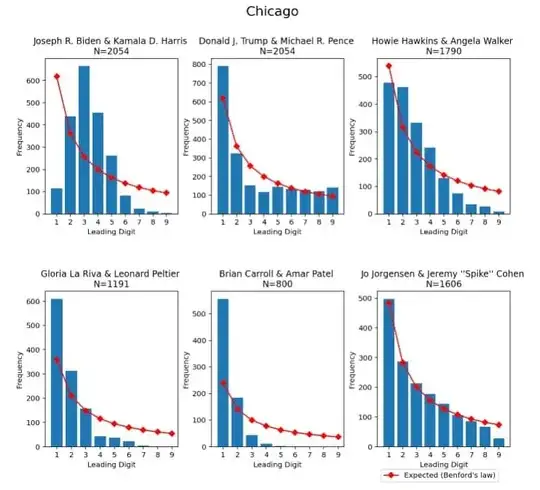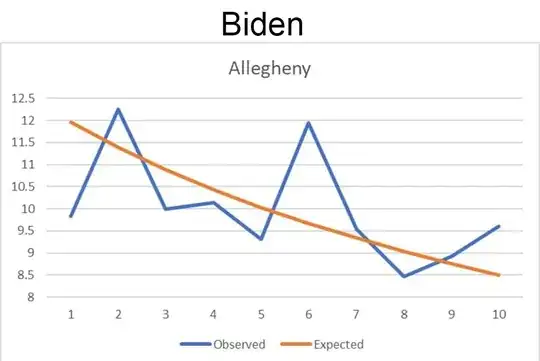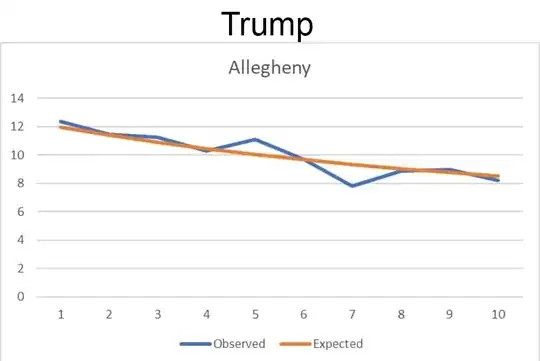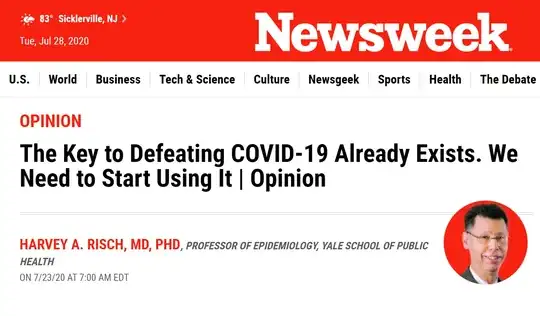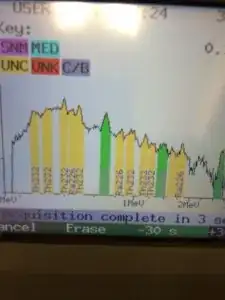TL;DR: No they don't; Benford's Law doesn't apply like that to begin with and the analysis was done badly.
Over on twitter, Dr. Jen Golbeck finally lost her temper after one too many poorly sourced graphs and went on a brief but informative rant about it.
A tweet thread is hard to cite properly, and thankfully after she realized how much attention it was getting she transposed it to a somewhat more reliable medium. I'll quote some of the more relevant parts below.
First, a bit on the author: As per her bio, Jennifer Golbeck is is an associate professor at the University of Maryland in College Park and is Director of the Human-Computer Interaction Lab. More pertinent, possibly, is that when the Netflix documentary 'Connected' did an episode on Benford's Law, she's the one they consulted.
First, a basic primer on Benford's Law and how it's useful:
Benford’s law basically says that the first digit of numbers in some
naturally occurring systems follows a pattern. You may intuitively
think that numbers that start with 1 are just as common as numbers
that start with 9, but in lots of systems, around 30% of numbers start
with 1 and the frequency declines to where only like 5% of numbers
start with 9. This is seen ALL OVER! I showed that it applied in
social networks to friend counts and that it could be used to detect
bots. It’s used in financial and accounting investigations and can
even be used in court as evidence of fraud. The length of all the
rivers on earth follow this pattern. Atomic weights. JPEG
coefficients. It’s mindblowing!
If you want to know more about it, Netflix has a series out called
Connected and episode 4 (Digits) is all about it. I’m in that
documentary, so say hi when I come across your screen.
She then goes into explaining why it does not acually work on election results the way people think:
First, there’s not a big spread of orders of magnitude in precinct
sizes. Most places Benford is applied, you have numbers in the 10s,
the 100s, the 1,000s, the 10,000s, etc. Precincts don’t have that much
variation in them because we don’t want them to be so giant that we
can’t count all the votes. That’s one strike against Benford working.
Next, and this is really important, votes in a precinct are
(basically) split between 2 candidates in this election. (3rd party
candidates make up such a small percentage that they don’t matter for
this point). If Trump gets X votes, Biden gets (basically) TOTAL- X.
Say every precinct has 1,000 people. If Trump follows Benford, Biden
COULD NOT follow it.
This is not, in fact, an even remotely new development:
Third, we’ve studied this. We know it doesn’t work. People may share
some data from past elections, but there are decades of research
looking at elections around the world and it’s extremely
well-established the first significant digit Benford analysis does not
work here. Full stop.
In fact, she asserts that the people who claim it does are actively trying to mislead:
All the people who read a Wikipedia article and put some numbers in
Excel are doing the thing I outlined above. We know this doesn’t work.
They are lying — not just misinformed. Many of us have been tirelessly
correcting their methods over the past 5 days, but they keep coming.
They know it doesn’t work. The papers are all public and available.
They do not care. It looks good for their argument and they are trying
to trick you.
Like a good researcher, she goes on to cite her sources:
Here’s a quote from a paper on the topic:
“Benford’s Law is problematical at best as a forensic tool when
applied to elections…Its ‘success rate’ either way is essentially
equivalent to a toss of a coin, thereby rendering it problematical at
best as a forensic tool and wholly misleading at worst.”
source: Deckert, Joseph, Mikhail Myagkov, Peter C. Ordeshook.
“Benford’s Law and the detection of election fraud.” Political
Analysis 19.3 (2011)
She cites a few more sources and reiterates the assertion that the people who claim Benford's law applies and proves election fraud are acting in bad faith, but I've already quoted entirely too much of the article verbatim as is.
I don't have the math background myself to check out her analysis, but it sounds persuasive.
